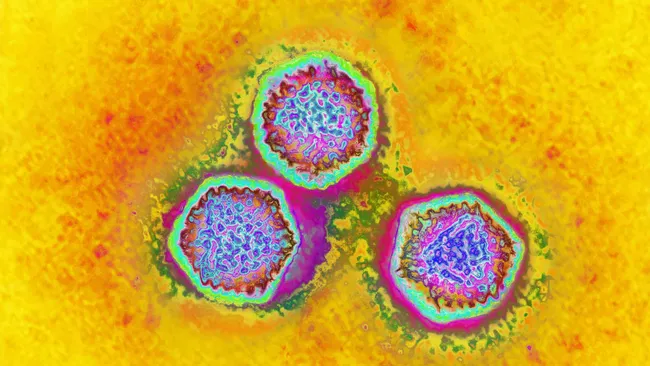- Courses
- GS Full Course 1 Year
- GS Full Course 2 Year
- GS Full Course 3 Year
- GS Full Course Till Selection
- CSAT
- 5 LAYERED ARJUNA Mentorship
- Public Administration Optional
- Online Program
- GS Recorded Course
- NCERT (Recorded 500+ Hours)
- Polity Recorded Course
- Geography Recorded Course
- Economy Recorded Course
- AMAC Recorded Course
- Modern India, Post Independence & World History
- Environment Recoded Course
- Governance Recoded Course
- Science & Tech. Recoded Course
- International Relations and Internal Security Recorded Course
- Disaster Management Module Course
- Ethics Recoded Course
- Essay Recoded Course
- Current Affairs Recoded Course
- ABOUT US
- OUR TOPPERS
- TEST SERIES
- FREE STUDY MATERIAL
- VIDEOS
- CONTACT US
Oldest Known Human Viruses Found In 50,000-Year-Old Neanderthal Bones
Oldest Known Human Viruses Found In 50,000-Year-Old Neanderthal Bones
27-05-2024

Recent research has revealed that Neanderthals were infected with three viruses that still affect humans today. These viruses are:
- Hepatitis B virus (HBV)
- Hepatitis C virus (HCV)
- Epstein-Barr virus (EBV)
The discovery of these viruses in Neanderthals provides insights into the evolution of human-virus interactions and the co-evolution of viruses and their hosts.
About Neanderthal:

Neanderthals, a close extinct relative of modern humans, roamed Europe, Central, and Southwest Asia approximately 50,000 years ago. Recent findings indicate that they were infected with three viruses still prevalent in modern humans.
- The last Neanderthal populations are believed to have died out about 40,000 years ago, several thousand years after a wave of modern humans migrated deeper into Europe.
Neanderthal Facts:
- Species: Homo neanderthalensis.
- Classification: Extinct relative of modern humans.
- Distinctive Features:
- Large middle part of the face, angled cheekbones, and a prominent nose adapted for humidifying and warming cold air.
- Shorter and stockier bodies compared to modern humans, adapted for survival in cold environments.
- Brains comparable in size to modern humans, often proportionally larger to their muscular bodies.
- Extremely muscular and strong bodies, indicating a physically demanding lifestyle with frequent injuries.
- Lack of a prominent chin, unlike modern humans.
- Behavioral Traits:
- Crafted and utilized sophisticated tools.
- Controlled fire and lived in shelters.
- Made and wore clothing.
- Skilled hunters of large animals.
- Consumed plant foods.
- Occasionally created symbolic or ornamental objects.
- Deliberately buried their dead and sometimes marked graves with offerings, such as flowers.
Significance:
Neanderthals exhibited sophisticated and symbolic behaviors not observed in any other primates or earlier human species, highlighting their advanced cognitive abilities.
What is a virus?
- A virus is a small infectious agent composed of a nucleic acid core (either DNA or RNA) enclosed within a protein coat.
- Unable to replicate on its own, a virus invades host cells, and uses their components to make copies of itself.
- This process often results in the host cell being destroyed, causing damage within the host organism.
- Familiar examples of viruses responsible for human diseases include AIDS, COVID-19, measles, and smallpox.



